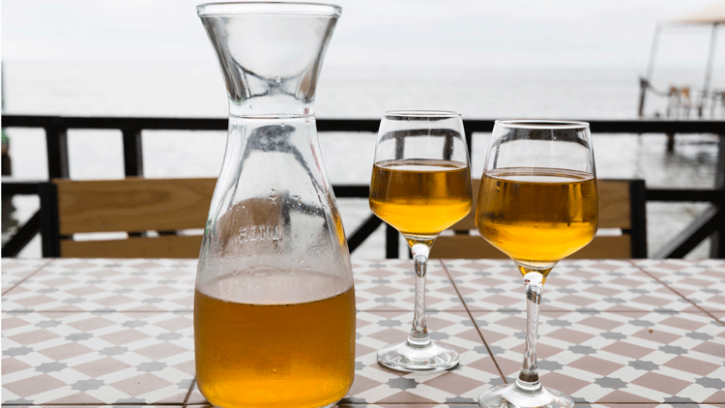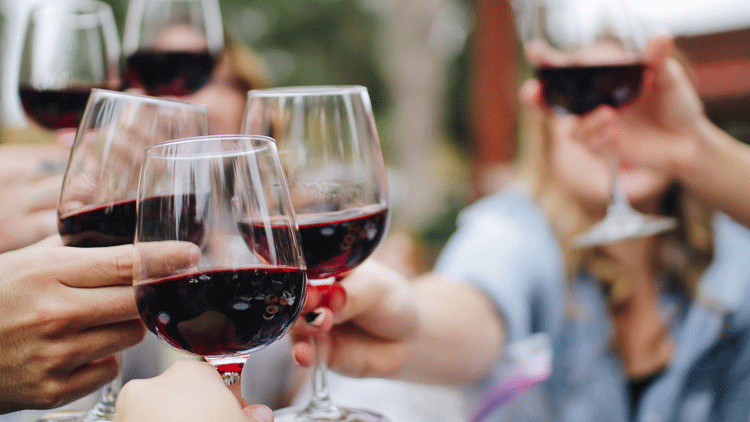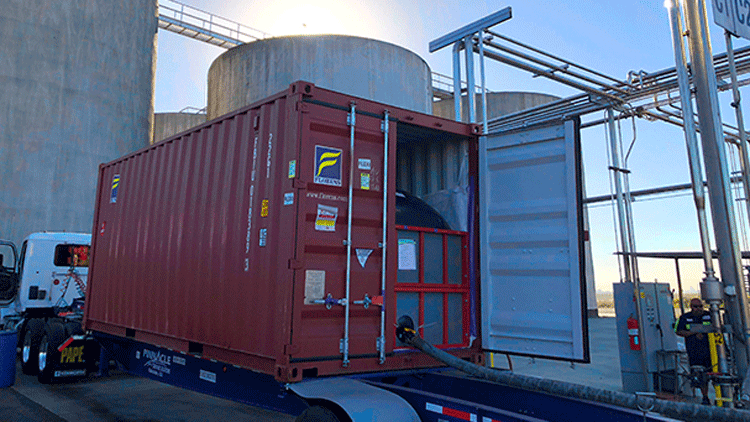Orange wine goes mainstream, and five other restaurant wine trends

New bottle sizes
Some producers are set to experiment with different size bottles following the Government’s relaxing of the rules around pre-packed wines. The changes allow both still and sparkling wines to be sold in 200ml and 500ml quantities (before still wine could not be sold in 200ml, and sparkling wine could not be sold in 500ml). In what’s being hailed as an example of the UK 'capitalising on the benefits of Brexit' there’s also a new 568ml ‘pint’ quantity. How useful any of this will be for restaurants is debatable, although a 500ml bottle of sparkling wine could come in handy in some situations (pint size bottles of wine less so, because of the lack of compatibility with by the glass measures). East Sussex producer Rathfinny will soon launch what is claimed to be the UK’s first 500ml bottle of sparkling wine. Just 800 bottles of the 2020 Rathfinny Mini Cuvée are available, each individually numbered by hand.
More modest pours
The cost of wine has risen dramatically over the past few years due to a number of factors including climate change-linked lower yields and a big leap in the price of glass and transport costs. Alongside this, the overall cost of running a restaurant has gone up. All this has seen by-the-glass prices spiral - it’s not uncommon to see a price tag of £10 plus on an average bottle of house wine at upmarket restaurants. One possible solution to off-setting by-the-glass prices is to reduce the measure from the now pretty much standard 125ml to 100ml, which theoretically enables restaurants to shave 25% off prices. While his entry level prices are much lower than a tenner, Michael Sager is pioneering the 100ml serve at his new east London wine bar and bottle shop Bruno. Even smaller measures are also an option for restaurants that take their wines seriously. Noble Rot has offered 75ml ‘taster’ serves since its inception as a restaurant in 2015.
Supplier comment
Lanchester Wines on why it might pay to rethink your by-the-glass programme
It’s important for venues to remain competitive with their by-the-glass offering. Use it to attract customers while giving them an opportunity to try something without committing to a bottle. Your customers know the ‘super’ varietals – they’re widely available in both the on and off trade – so why not offer something different by-the-glass? Give your customers good, interesting, alternative wines which elevate your list. This could be the next level up from these super varietals, or something completely niche because, of course, every very wine list will be different – because every venue’s customer and food offering will be different. Suppliers come in all shapes and sizes, from smaller importers focusing on a region or country, scaling up to larger national composite wholesalers – but it is those suppliers that make the effort to create a wine list most beneficial to their specific venue, understanding the geographic and demographic impact of what wines work best, who will be the most successful. Essentially, a venue’s by-the-glass wine offering provides a golden opportunity to sell up the list, to make the correct margin and to be profitable.
Orange wine goes mainstream
Once largely the preserve of hipster natural wine bars, orange wine and other skin contact whites are an increasingly common sight on less specialist wine lists. While still misunderstood in some quarters - shout out to all the restaurant staff that regularly have to explain that ‘no, orange wine is not, in fact, made with oranges’ - restaurants have become more and more appreciative of their versatility. While the flavour profile varies significantly according to the grape variety used and the amount of time the juice remains in contact with the skins, key food matches to consider include grilled meats (especially and perhaps counter intuitively lamb), hard salty cheeses, and Middle Eastern-flavours.
Dry Jurançon
Best known for its sweet wines, the Jurançon region in south west France is a good source of dry (Jurançon sec) wines that are comparable to taut, high-acid wines from places like Burgundy (Chardonnay from Chablis, Aligote) and Jura (Chardonnay and Savagnin-based). Prices for wines from these regions have rocketed in recent years due to high demand and climate changed-linked low harvests. By contrast, the dry wines of Jurançon are little known in the UK and other international markets and are therefore much more affordable. “Jurançon is a largely untapped source of great wine,” says Honey Spencer, the high-profile sommelier behind east London’s Sune restaurant. “These wines are embedded with the comforting depths of Burgundy woven with Jura’s electrifying acidity. In general, you’re looking at wines produced by classically-orientated producers working with small volumes, resulting in wines with some low intervention traits that you could still serve to you dad.”
Reds from regions that are best known for whites
Many of the world’s best-known regions for whites also have a sideline in red wines. Often, these wines are vinified with the local market in mind but that doesn’t mean they’re not of interest to more adventurous wine drinkers (and potentially good value to boot). On top of this, rising temperatures have in general upped the quality and approachability of red wines made in the cooler regions that (typically, at least) suit white wine production. Even with things hotting up, such reds are light in body, high on acid, low on abv and often intended to be consumed chilled and therefore very much on trend. Examples include Pinot Noir-based wines from the upper Loire Valley; Schiava from Italy’s Alto Adige; and Mosel Spätburgunder (the local name for Pinot Noir).
Carbon insetting
Generally considered preferable to carbon offsetting, carbon insetting sees companies focus on carbon reduction activities that are directly related to its products and services. Though far from a new idea, more and more wine producers and wine suppliers are making major investments to reduce their footprint and increase efficiencies. “The good news for restaurateurs is that the wine trade has focused on insetting for centuries,” says Lanchester Wines’ business unit controller James Dainty. “As the wine industry spans the globe, insetting has to be apportioned to the different elements of the wine process. You can firstly start by looking at the winery; how has it adapted to its environment and social surroundings, and used the resources available from water conservation to soil management, vineyard grazing through to community projects?” The transportation of wine is also important. Lanchester Wines is a proponent of bulk shipping, where wine is shipped from its country of origin in enormous containers and bottled in the country in which it is to be consumed. “A Flexitank containing 24,000 litres will fit in a 20ft container, while the same volume in bottle would require two 40ft containers,” Dainty continues. “With this comes a significant win on the environmental front, with CO2 savings of 37% (bulk versus bottled at source) which is around 2kg of CO2 per kilometre travelled.” Lanchester Wines’ sister business Greencroft Bottling – which is where all of Lanchester Wines’ bulk wine is packed – is about to start production at its new £21m Greencroft Two facility. The size of four football pitches and capable of filling up to 400million litres per year, it is the first purpose-built wine bottling facility to open in the UK for decades and is developed with sustainability front of mind, with initiatives including a solar panel roof and wind turbines that are expected to generate up to eight million KiloWatt hours per year of clean, renewable energy.








